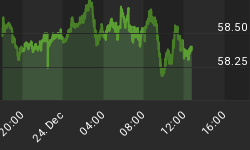President Trump is reportedly considering tapping the strategic petroleum reserve to lower gasoline prices in an effort to neuter a political threat ahead of key midterm elections in November.
Sources told Bloomberg that options are under consideration by the Trump administration, ranging from a minor 5-million-barrel test sale, a symbolic amount, to a more sizable release of 30 million barrels. A more aggressive option could entail a larger release, combined with coordinated stockpile releases from other countries. No decisions have been made.
“An SPR release would have a psychological impact on the market. It may not translate into lower gasoline prices, but it would immediately bring down crude prices, at least temporarily, until the market adjusts,” Joe McMonigle, senior energy analyst at Hedgeye Risk Management LLC, told Bloomberg.
“It’s unclear whether the U.S. will actually use the emergency inventories, but we can at least tell that they feel a lot of pressure from crude trading above $70,” Ahn Yea Ha, an analyst at Kiwoom Securities Co., said in a Bloomberg interview.
National gasoline prices are hovering just below $3 per gallon, the highest price in more than three years. However, the rally in crude oil prices has stalled and reversed over the past week, with Libya in the process of restoring the 800,000 bpd that had been disrupted. News of Libyan oil trickling back online led to a sharp selloff in crude prices last week. Related: Can Artificial Intelligence Compete With Real Doctors?
Monday saw another steep decline in prices, and WTI is back below $70 per barrel. Saudi Arabia said that it would expand its production, offering more volumes to Asian buyers. Russia’s energy minister also said that the OPEC+ coalition could add more than the 1 million barrels per day that they agreed to in June, if needed.
Moreover, Saudi Arabia said that the OPEC+ group would no longer track compliance figures for individual countries as part of the production cut agreement. Instead, OPEC+ will follow a collective target. The shift will essentially give Saudi Arabia and Russia more room to take market share as production from Venezuela and potentially Iran continues to fall off a cliff.
Iran, of course, rejected the move, but Tehran’s opposition doesn’t have any practical weight on Saudi actions. In any event, Saudi Arabia is already way over its production limit of 10.06 mb/d, having produced an average of 10.49 mb/d in June. "Regrettably, unilateral behaviors in production increase by some member countries is weakening the very foundation of our organization," Iran’s oil minister Bijan Zanganeh wrote to OPEC’s president.
The plunge in oil prices over the past week – Brent is off nearly 8 percent since July 10 – will take some of the pressure off and likely reduce the urgency for the Trump administration to make a decision on an SPR release. There is a lag between movements in crude oil prices and retail gasoline prices, so the price at the pump may not drop for another few weeks. However, if crude prices fail to rebound from after the recent drop, consumers will feel the relief soon enough.
That doesn’t mean that the Trump administration will shelve the idea of releasing oil from the SPR. The SPR has historically only been used in the most extraordinary circumstances, such as war or natural disaster. Previous releases from the SPR include the Iraq war in 1990/1991, in the aftermath of Hurricane Katrina in 2005 and after the disruptions in Libya in 2011.
Politicians once feared the political fallout of using oil from the SPR in the absence of a genuine supply disruption – nobody wanted to be seen tapping the SPR for political purposes. But the political price of dipping into strategic stockpiles has declined significantly over the past decade, largely as a result of perceived abundance as U.S. shale production has soared.
Related: $1,000 Investment Bible Leaked For $10
The U.S. Congress has legislated SPR sales for budgetary reasons, undercutting the security rationale behind holding the stockpiles and significantly lowering the political bar that the executive branch needs to clear to release oil from the reserve. It is hard to imagine President Trump suffering political damage from using oil from the SPR and even harder to imagine the U.S. Congress doing anything to stop him.
Nevertheless, whether or not the Trump administration pulls the trigger on an SPR release will largely come down to what happens with oil prices over the next few months. Sources told the Wall Street Journal that a significant release would only come if oil prices rose much higher. For now, the administration is holding off.
By Nick Cunningham for Oilprice.com
More Top Reads From Safehaven.com:

















